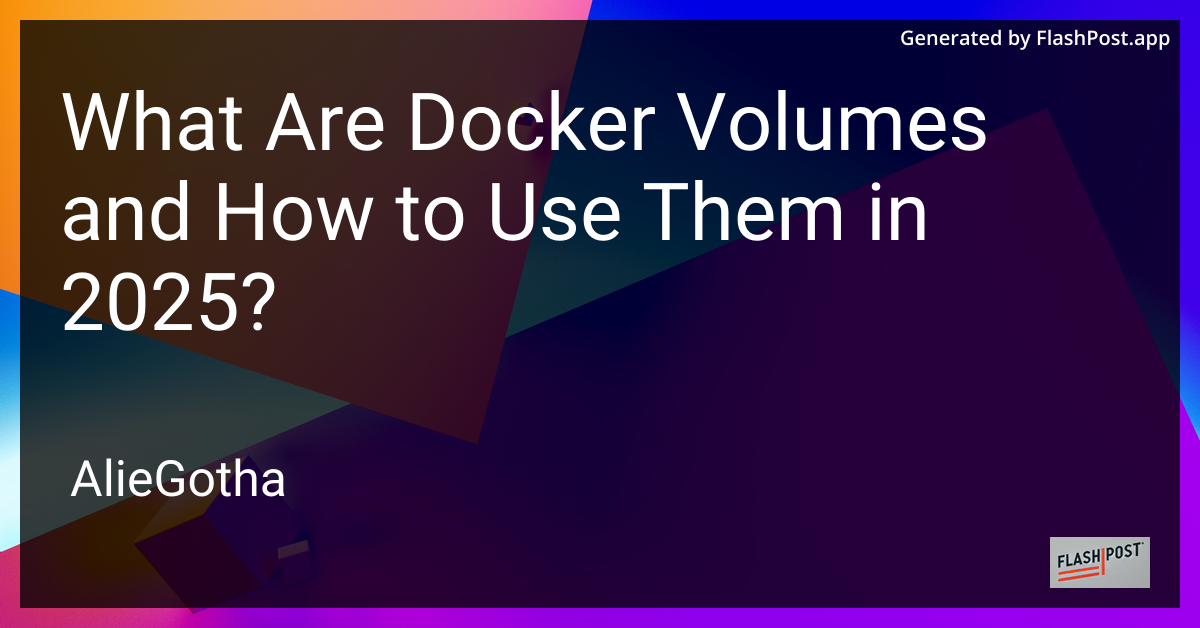

What Are Docker Volumes and How to Use Them in 2025?
In the evolving landscape of containerization, understanding storage is key to efficient application management. Docker volumes offer a robust mechanism for managing data persistence across ephemeral containers. As we look ahead to 2025, leveraging Docker volumes is increasingly important for seamless data operations and container lifecycle management.
Understanding Docker Volumes
Docker volumes provide a way to persist data generated and used by Docker containers. Unlike the default ephemeral storage, volumes are independent of the container’s lifecycle, ensuring data persists after containers are deleted. This aids in maintaining seamless operations across updates, restarts, and failures.
Types of Docker Volumes
As of 2025, Docker supports several types of storage drivers to cater to diverse needs:
- Host Volumes: Bind mounts that map a directory on the host to a directory in the container.
- Named Volumes: Managed entirely by Docker and stored in the host’s filesystem, providing separation from host directories.
- tmpfs Volumes: Temporary filesystems stored in memory, typically used for high-speed access and when persistence isn’t required.
How to Use Docker Volumes
Utilizing Docker volumes can vastly improve your container deployment efficiency. Here’s a simple guide to getting started:
Creating a Docker Volume
docker volume create my_volumeThis command generates a new volume named my_volume, which can be used across multiple containers.
Attaching Volumes to a Container
docker run -d --name my_container -v my_volume:/app/data my_imageHere, my_volume is mounted to /app/data within the container, allowing persistent access to data across container restarts.
Accessing Data within a Volume
Once a volume is attached, it seamlessly integrates with your container’s filesystem. You can read and write data to the specified directory, and the data will remain secure even when the container is removed.
Advanced Use Cases for Docker Volumes
In 2025, many applications require more sophisticated storage strategies. Here are some advanced scenarios:
- Migrating Data Across Environments: Easily transfer data across development, testing, and production by backing up and restoring volumes.
- Persisting Databases: Ensure database data remains consistent and uncorrupted across deployments. Learn more about this with docker-compose PostgreSQL data management.
- Comparative Use in Kubernetes: While Docker provides foundational volume management, exploring Minikube and Docker can offer insights into scaling volumes in orchestration layers.
Integration with Other Tools
Docker volumes can be effectively combined with other tools like Vagrant for optimized workflows. Explore this in detail by learning how to convert a Vagrant box to a Docker image.
Conclusion
In the ever-evolving landscape of container orchestration, grasping how to leverage Docker volumes is crucial for data persistence and management. As we continue through 2025, volumes remain a cornerstone of efficient, reliable container deployments, ensuring that applications remain robust and adaptable to various environments.
By integrating Docker volumes into your development workflow, you are prepared to manage data efficiently through any changes your infrastructure may face.
For further reading about persistent storage solutions and container orchestration, follow the provided resources and enhance your understanding of these crucial technologies.
